While decorating any indoor space, a touch of green is always very refreshing. Along with purifying the air, indoor plants help to add life to a sterile space and enhance the beauty of a space. Indoor plants help to boost mood, focus, productivity and, creativity.
We have categorized some best indoor plants to help you choose for your home and office:
- Easy to Maintain Indoor Plants
- Small Indoor Plants
- Large Indoor Plants
- Low Light Indoor Plants
- Air Purifying Indoor Plants
Table of Contents
Easy to Maintain Best Indoor Plants
These plants are the best for the first timers, and those people who enjoy plants but are unable to invest more time for its care.
1. Cactus
This plant is very tolerant and forgiving houseplant for someone who does not know how to care for the plants. Cactus plant stores moisture in its roots, leaves and, stems, and, so largely regulates its food intake. A cactus plant likes a light, airy, and warm spot and can also cope well in direct sunlight.
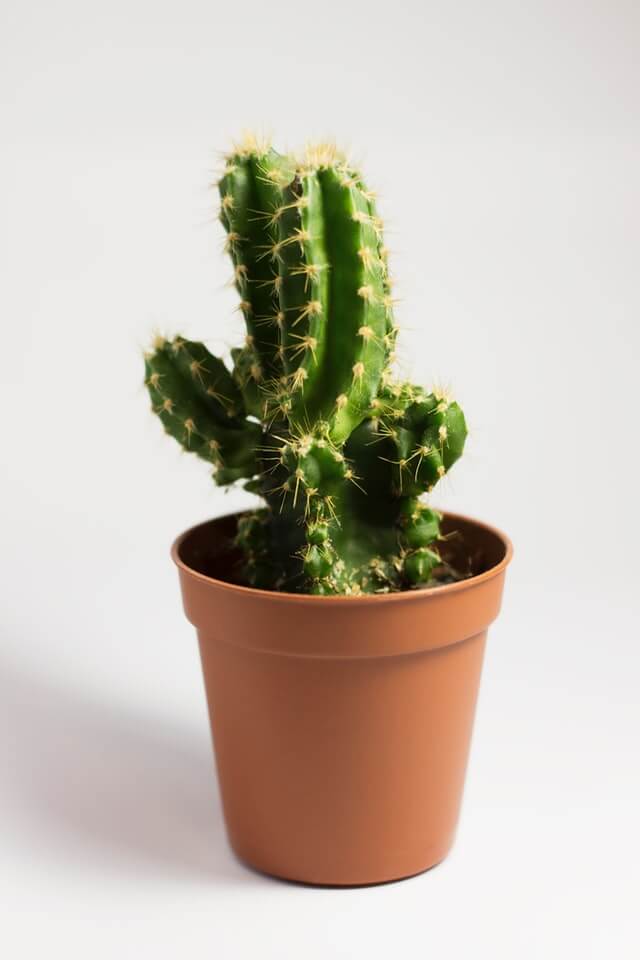
If you forget to water once the soil has dried out it will most probably survive for several weeks or even months without any ill effects. However, if you want a thriving plant then the best way to water your cactus is to do so whenever the soil dries out fully from your last watering. And remember cactus will be very happy to sit in a location that receives direct sunlight for part or most of the day.
2. Snake Plant
Snake plant (Sansevieria trifasciata) also known as Mother-In-Law’s Tongue was first cultivated in China and kept as a treasured houseplant. It was believed, the eight gods bestowed their virtues (long life, prosperity, intelligence, beauty, art, poetry, health, and strength) upon those who grew the snake plant. It is known to be the one of the best accommodating low maintenance indoor plants. This plant is also popular for its air purifying quality.
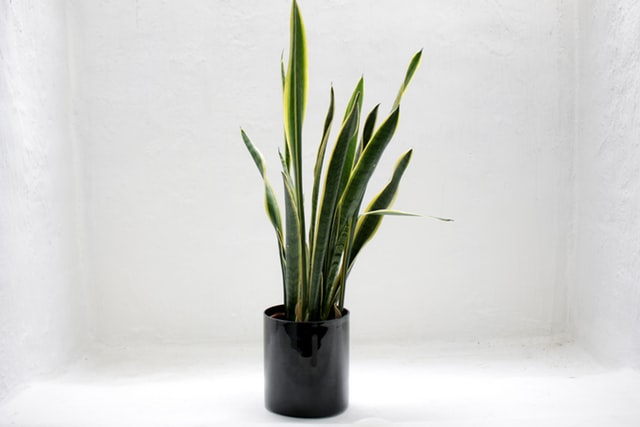
The plant feature stiff leaves that range from six inches to eight feet tall, depending on the variety. Most of the snake plants tends to have stiff, upright, sword-like leaves that may be banded or edged in gray, silver, or gold.
Snake plants prefer bright indirect light. Over watering tends to develop root rot. To avoid this, Do not water too frequently. Let the soil mostly dry out between watering.
3. Jade Plant
Jade plants are considered a symbol of good luck. It is not at all a demanding plant and is easy to care for. It will add the refreshing touch of green to your home or office. We can keep this plant as the table decor for your home and office potted in a small pot.

They need full sun in order to grow properly, and may become stunted and leggy in its absence. These plants can sustain under watering but never let a jade plant dry out completely. Over watering can cause root rot.
Small Indoor Plant
The best part about most of these small potted plants is that they can fit almost anywhere in your home or office. Here are some small indoor plants to brighten your space.
1. Lucky Bamboo
Lucky bamboo plant is one of the most popular Feng Shui cures. It said to bring good luck and prosperity to the place where it grows. Though it looks like a bamboo plant. It is a type of tropical water lily called Dracaena Sanderiana. It is easy to care for which makes it great for both homes and office. Another factor that makes lucky bamboo popular is its ability to be trained into different shapes like swirl, braid, and other designs.
These small plants need indirect sun light and can grow in both soil and in water. The water should be replaced in every 7 to 10 days if you are growing the plant in water. If planted in soil, the soil should be kept slightly damp, so make sure not to over water or let it dry.
2. Echeverias
Echeverias is one of the most common types of succulents. Their stunning rosette shape, plump leaves, and large variety of colours give them striking resemblance to flowers and are very favorable for decoration. They do not need much room for their roots and can cope in small pots. This makes them one of the best table decors. Echeverias are easy to care for, grow quickly and can tolerate drought.
They require partial to full sunlight and thrive in well-drained soil. Be careful not to over water it. They can tolerate cold, but cannot cope with wet and cold, so make sure to move the plant to frost free place over winter.
3. Air Plants
Air plants are one of the easiest indoor plant to care. They are interesting plants that do not need soil and absorbs water and nutrients through scales on their leaves. Their leaves look a bit like alien tentacles or like the appendages of some sea creature.
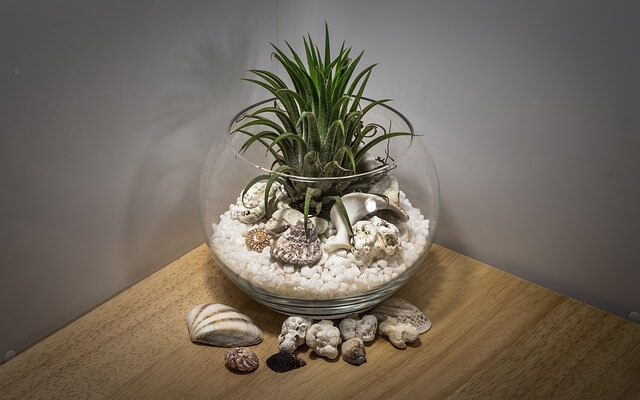
Even though they don’t need potting, they still need certain amount of water, light, right temperature like any other plant. It requires sun light and must be watered about once a week. Make sure it gets proper circulation. This is important for air plants.
Large Indoor Plants
Along with adding greenery and finishing touch to any room, big and beautiful indoor plants are ideal for filling empty corners and wall.
1. Philodendron
The Philodendron is a favorable plant for the beginners at growing indoor plant as it has reputation for being one of the easiest houseplants. For the indoor use, there are two basic types of philodendron; the climbing types and, the non-climbing (up right) types. These plants can grow from 3 to 20 feet tall.
The climbing types can be used in hanging basket or trained along a trellis. The upright ones in a pot can be kept on the floor.
These plants thrive in indirect sun light and does not need much water. However, it is essential that the soil is not let to dry out completely.
2. Palm
Palms are one of the most common large indoor plant. While there are wide range of palms available, most have similar growing needs. Most types of palm trees are native to tropical region and grow best with indirect light and, moderate humidity. They are also tolerant to lack of watering.
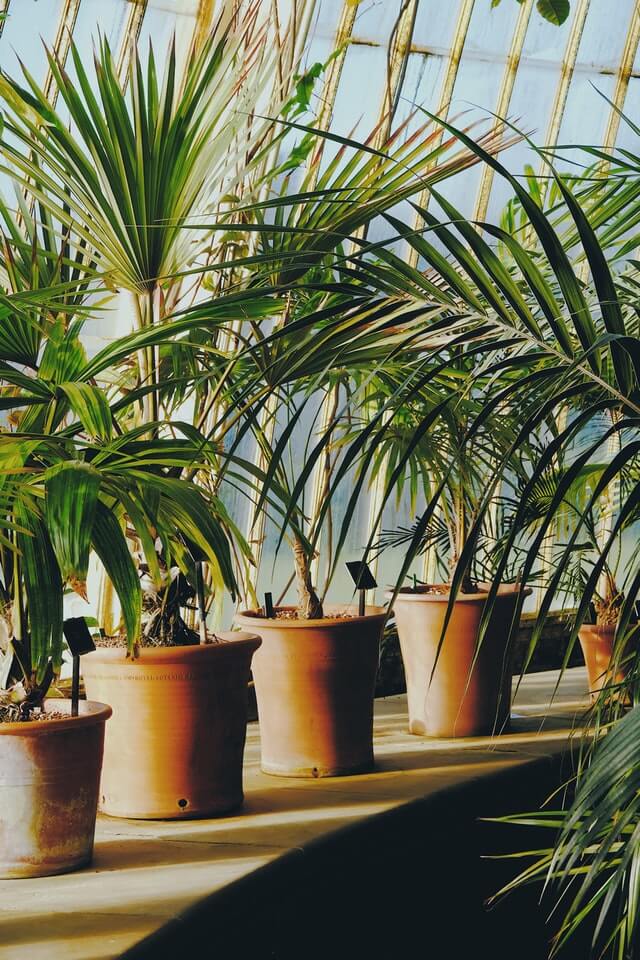
A relatively common problem palms plants can have is brown leaf tips. This browning may occur due to direct sun light for too long, dry air, excessive use of fertilizer, and keeping it dry for too long.
Some popular palms are; Parlor palm, Pygmy Date palm, Areca palm and fan palm.
3. Dracaena
Another name people use for the Dracaena is a dragon tree. It is an attractive, stiff-leaved plant with green sword-like leaves edged with red. The plant have narrow, slender gray stems that are topped with shiny, sword-shaped leaves. It is a large group of popular houseplants that tolerates a wide variety of growing conditions. Occasionally, during spring the plants set clusters of small, fragrant, white blossoms (but rarely indoors).
As an indoor plant, the Dracaena needs bright indirect sunlight to grow. It’s easy to over-water this plant which can be identified if the plant develops brown tips on the leaves. Brown tips on leaves may also be because of excess of salt or fluoride in water which can cause discoloration. To avoid fluoride, use distilled or non-fluoridated water. If the plant has, yellow leaves, it usually means the plant needs more water.
Low Light Plant
If you have been afraid to try growing houseplants in your home or a particular space because it is does not receive enough light. Then fear not, these plants adapt very well in the low light.
1. Clivia
They have long, strappy, thick, and waxy leaves which emerge from the soil directly opposite one another in an alternating pattern. Clivia plants have a very elegant and almost perfectly symmetrical shape. Leaves and stems can reach 20 inches in length.
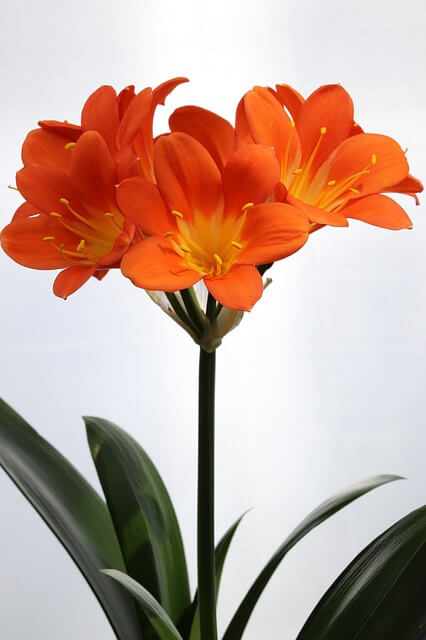
The flowers of Clivia plants are orange, and borne in crowded clusters atop a thick stem once a year, usually in early spring. However, there are some hybrids that have been recently developed so this plant can be found having yellow, pink, and red flowers. Clivia flowers lasts several weeks. After the flowering, clusters of large, berry-like fruit are formed and when the fruit ripen, they turn an attractive yellow or red color.
2. The maidenhair fern
The maidenhair fern is a pretty option with delicate, lacy leaves, and will be happy in a spot offering indirect light and need to be in a very bright position. They can tolerate low levels of light but they demand high humidity and has to be watered and misted frequently. While many houseplants prefer to dry out in between watering, ferns like constantly damp soil. Another name for this plant is the five-fingered fern due to its finger-like fronds, which are supported on dark brown to black stems.
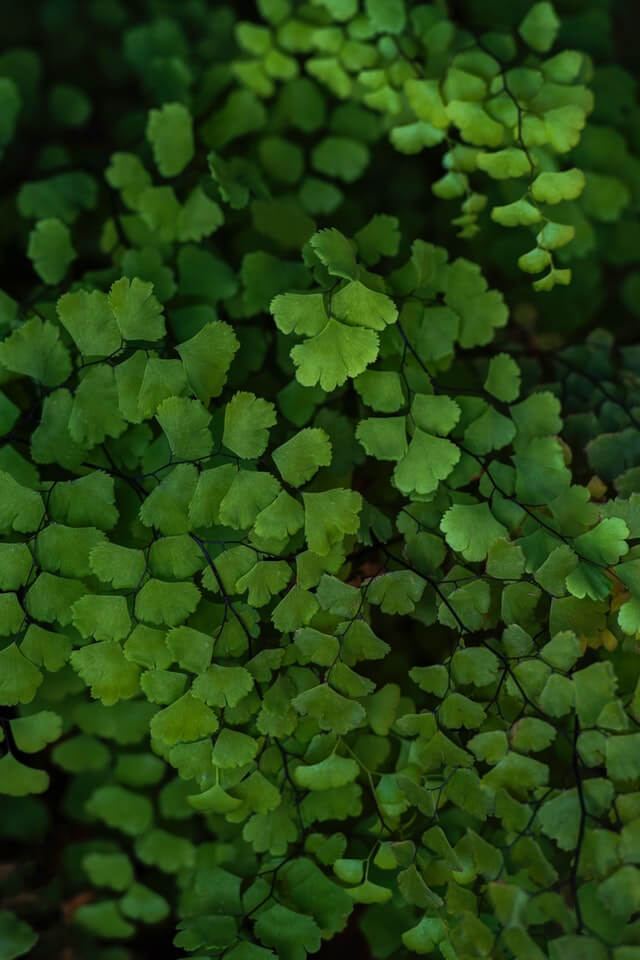
3. Cast Iron Plant
Cast iron plant, the name of the plant itself suggest the hardiness of the plant, and it certainly does not disappoint us. The plant is easy to care for and will survive through neglect that would kill any other lesser plants. It is one of the best indoor plant that can survive and thrive in low light condition. The plant has small purple flower that only appears near the soil surface and are hidden in its foliage which are of dark green colour. The new plant may be slow to grow but it certainly won’t disappoint you. It is an excellent plant to make a dark shady room look lively.
It thrives on low light condition and cannot sustain direct sunlight. Make sure not to over water it which may cause root rot. Let the soil dry out between watering.
Air Purifying Indoor Plants
These are the best indoor plants and are also attractive, very popular as air purifying plants.
1. Aloe Vera
Aloe Vera is known for its hardiness and tolerance of forgetful watering. Therefore, it is considered to be good news for the beginners and people who are said to have black thumbs . This plant is also known as a healing plant. Along with its healing properties, and being an attractive indoor plant, aloe Vera is also one of the best air purifier indoor plant.
Aloe Vera thrives in sun light. Over watering of this plant may cause roots to rot. Water the plant heavily about once every two weeks, waiting until the soil dries out fully. Limp, or brown leaves also signal you’ve overdone the Watering.
2. ZZ Plants
ZZ plants are beautiful, tough, and easy to care for. This plant is tolerant to low light conditions, does not require regular watering and is one of the popular air purifying indoor plant. It has stems with many leaves. Its leaves are fleshy type which are only a couple of inches in length and an inch or so wide. Its, smooth leaves reflect sunlight and brighten rooms. ZZ plants tends to grow slowly to a height and width of two to three feet. It is not a plant that outgrows containers quickly.
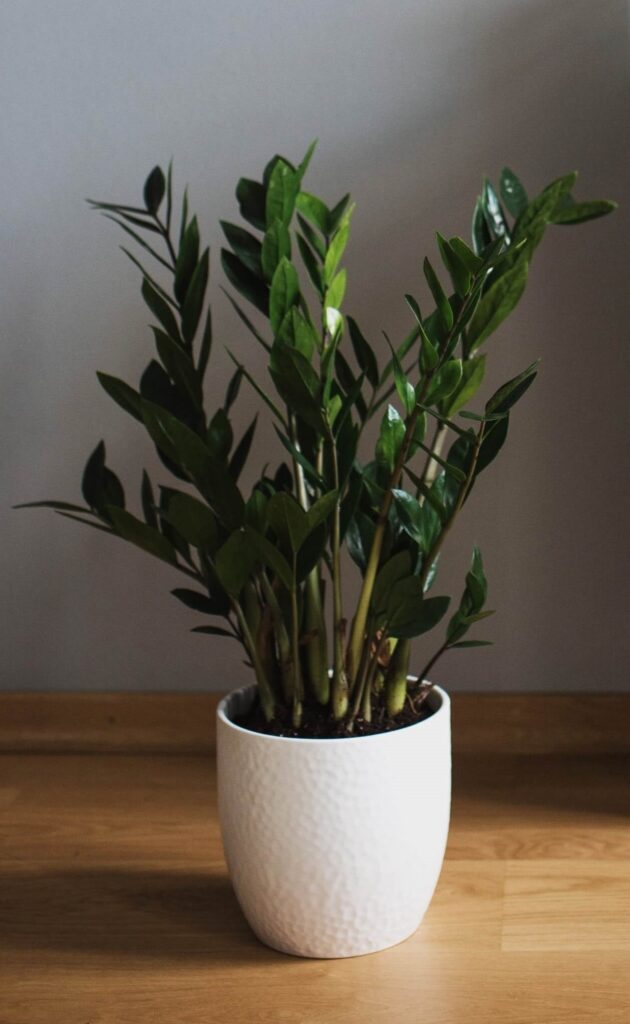
The plant does not need much watering but, pay attention to it and make sure that you are not starving it to death. Although it does not require a lot of light, it does require some, so don’t put it in a room that is rarely used or has no lights.
Caution: The only drawback of this plant is that all parts of this plant are toxic. Don’t eat it, keep it away from nibbling pets and children, and always wash your hands after handling it to avoid skin irritation.
3. The Chinese Ever Green
The Chinese Ever green are beautiful house plant with patterned leaves. They easy on the eyes and are easy maintenance house plant.
This tropical plant is proven to be an effective cleanser of formaldehyde and benzene, found in detergents and cosmetics. This plant can be used as upright table plants or as a floor plants as they get larger and bushier.
The Chinese evergreen enjoys low-lit and humid conditions, so it can adore your bathroom and thrive in it. You need to mist the leaves occasionally to prevent browning.


Ingrasaminte Chimice -
I got this website from my buddy who informed me about this web site and at the moment this time I am visiting this website and reading very informative articles at this time.